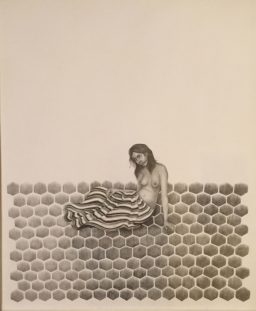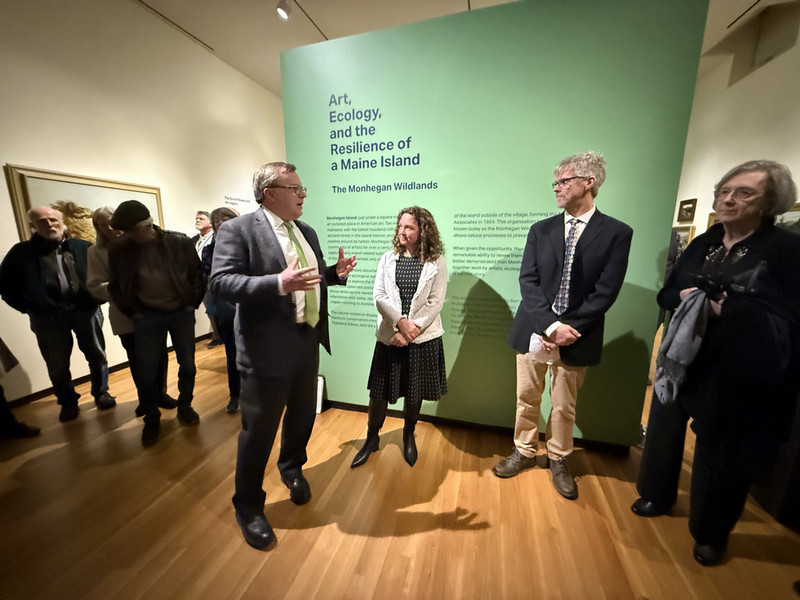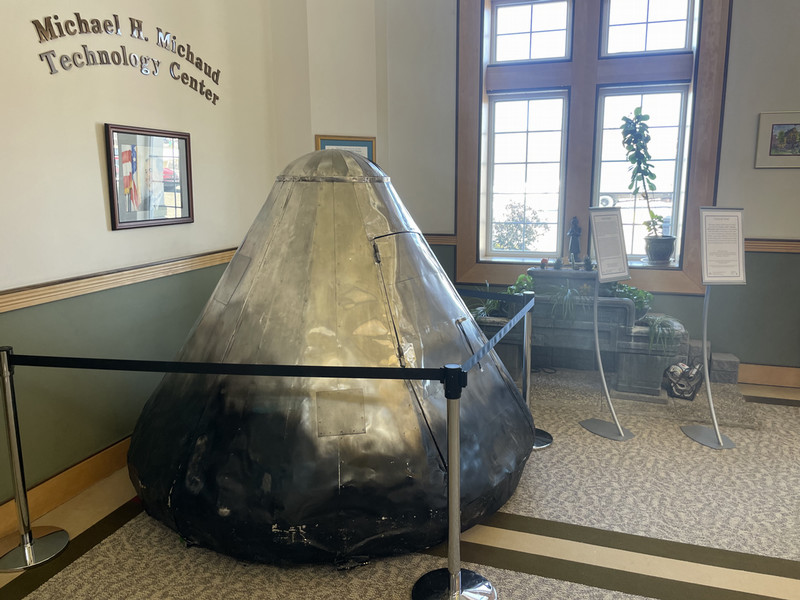The Oldest Public Collection of Drawings in America: A Living Resource
By Bowdoin College Museum of Art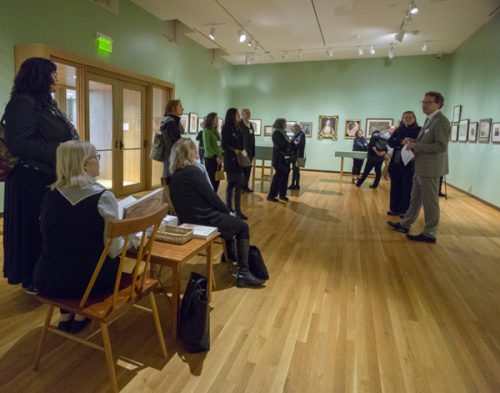
oachim Homann, curator, writes:
Why Draw? 500 Years of Drawings and Watercolors at Bowdoin College represents the first comprehensive survey of the Museum’s collection of drawings. Visitors to our galleries will discover nearly 150 unique works on paper by some of the most original artists of the past 500 years. The roster of contributors ranges from members of the studio of Raphael, Peter Paul Rubens, and John Singleton Copley to Mary Cassatt, Winslow Homer, Pablo Picasso, and highly esteemed contemporaries.
As the curator of the exhibition I am often walking through the galleries, enjoying the immense visual appeal of the drawings, pastels, collages, and watercolors, and learning from them about creative invention and artistic process. The drawings on view illustrate many stages of a work of art, from the first sketch to compositional and figure studies, to studio records of completed works. They shed light on the role of drawing in artistic education, since they include academic nudes and copies after plaster casts, as well as master drawings to be copied by students. By drawing from observation, artists sharpen their visual acuity and coordinate their eyes and hands. Occasionally artists achieve a revelatory clarity, whether they are using their skills to record details almost imperceptible to the naked eye, or they are providing us with access to a philosophical truth rarely encountered in our daily lives.
Throughout the summer, conversations in our galleries provide opportunities to learn together from artists and art experts. On July 11, I will spend some time looking closely at historic drawings and discussing workflow in the studio. On July 14, we will have the opportunity to speak with John Walker, the internationally acclaimed painter who exhibits six large works on paper in our galleries this summer. He will reflect on the ways drawing shapes the observation of nature. On July 18, Frank Goodyear will speak about Winslow Homer and his contemporaries, discussing changing attitudes towards works on paper in the late nineteenth century. Former BCMA director Katharine J. Watson will draw visitor’s attention to the eighteenth-century origins of Bowdoin’s drawing collection on July 25. Rounding out this month’s programs, on July 27, George Keyes, former chief curator of the Detroit Institute of Arts, will offer a workshop about collecting old master prints and drawings.
The show includes many works that have not been previously on view, either because they are new acquisitions, promised gifts, or discoveries in Bowdoin’s collections. As you are walking through the Museum this summer, please take a close look at these new additions as we cherish the vitality of America’s oldest public collection of drawings.
Hyacinthe Rigaud
French, 1659–1743
Portrait of Joseph Jean-Baptiste Fleuriau d’Armenonville (1661–1728) Conseiller d’Etat, ca. 1708
black and white chalk and black ink, grey wash, heightened with white
Gift of George and Elaine Keyes and two Anonymous Donors
Hyacinthe Rigaud was the preferred portraitist of Louis XIV and XV and made canonical contributions to the art of French absolutism and of early eighteenth-century Europe. He adapted the European portrait tradition to the specific needs of the French court, developing the “portrait d’apparat” as a showpiece of great formality and elegance. This portrait drawing, a presentation drawing squared for transfer to a larger canvas, or perhaps to the engraver’s plate, makes Rigaud’s skill apparent. The sensitively rendered face is surrounded with a myriad of compelling, detailed elements that all indicate the sitter’s elevated status, elegance, and erudition. d’Armenonville was one of thirty Councilors of State, a lucrative position, which placed him right below the rank of prince and cardinal.
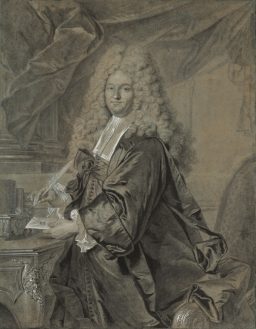
Georges Braque
French, 1882–1963
Head of a Woman (Tete de Jeune Femme), ca. 1920–1922
crayon
Bequest of William H. Alexander, in memory of his friend, Howard Hoyt Shiras, M.D.
When poet Francis Ponge collaborated with painter Georges Braque on the first publication of his drawings in 1950, they selected this work, which was then in the Collection Maeght. For Braque, drawings were usually preparatory, “executed with an eye on a painting to come, or during its composition,” as Ponge writes. They were vehicles of innovation, which contributed to Braque’s ability to modernize art and, together with Pablo Picasso, bring it into the “era of the automobile.” Following the catastrophic experience of World War I, in which Braque was severely wounded, he and others of his generation developed a new interest in the figure and the tradition of classicism that reflected a “return to order.”
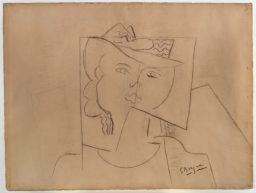
French, 1882–1963. Bequest of William H. Alexander, in memory of his friend, Howard Hoyt Shiras, M.D.
Norman Lewis
American, 1909–1979
Untitled, 1961
oil on paper
Gift of halley k harrisburg, Class of 1990, and Michael Rosenfeld
Lewis was an early pioneer of abstract expressionist painting, driven to overcome the constraints of representation with works that reference bebop and jazz as well as the history of African art. Lewis was active in the Civil Rights movement and associated with and championed African American artists, such as Romare Bearden and Jacob Lawrence, but sought in his work to transcend racial boundaries. Lewis’s delicate compositions sometimes appear suspended, as they unfurl in seemingly spontaneous gestures. Their linearity alludes to processions and might imply social movements as well as a range of emotions.
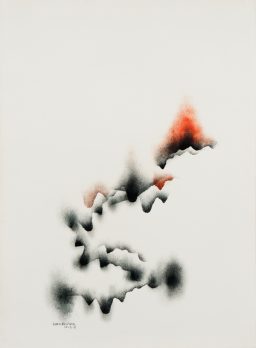
Alex Katz
American, born 1927
Pharrell, 2014
chalk and charcoal
Gift of the Alex Katz Foundation
Prompted by the global success of Pharrell Williams’s hit song “Happy,” W Magazine asked Alex Katz to portray the singer and songwriter. When Alex Katz submitted his small-scale oil sketch, painted in during a sitting with Williams, he already announced the work’s impending transformation. From the diminutive oil sketch Katz made this full-scale cartoon, which he edited during a brief second sitting with Williams, to prepare a large portrait painting. Once he had established the lines of the portrait in charcoal, he perforated them with a pointed wheel and then pounced them with a pad of red crayon onto the primed canvas. Painters have used cartoons to prepare large paintings and murals ever since paper became available in large quantities in the late fourteenth century. Most cartoons were destroyed in the transfer process.
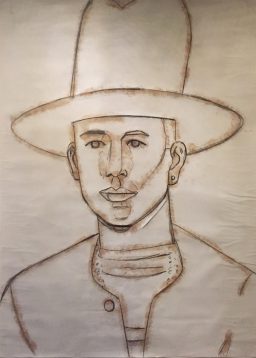
Nancy Grossman
American, born 1940
Gunhead, 1975–1981
oilstick and lithograph
Gift of halley k harrisburg, Class of 1990, and Michael Rosenfeld
Nancy Grossman’s sculptures often take the form of heads covered in restrictive leather garments and headgear, occasionally combined with a gun mounted in front of the face. Grossman, who grew up in a family of garment workers, asserts that her choice of materials relates to issues of gender identity and trauma. “Gunhead” makes visible how words can be as hurtful as weapons. She wrote: “There are times in an artist’s life when her vulnerable, internal landscape and world outside of her skin reach a kind of balance. Not a harmony, mind you, but quite the opposite. It is the invincible clang and force of being in love all the time–morning, noon, and night…. But this love is equal parts deep infatuation and rage, a personal integrity that allows a chance equilibrium between going to war in my studio as the Vietnam War hottened outside over there and politics nearly exploded over here.”
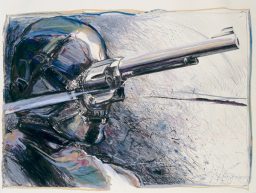
Taravat Talepasand
Iranian American, born 1979
The Seventh Day of Norouz, 2005
graphite
Collection of Bryson B. Brodie, Class of 2000. Promised Gift
In this self-portrait, Talepasand references the Persian New Year celebration, Nowruz (alternatively spelled Norouz). During the last feast of the celebration, one of seven symbols that are put on display in each home, the “Sabzeh” (grass), is taken to the parks and countryside and discarded, for it collected all the potential bad fortunes. Unmarried girls knot grass blades symbolizing the union of a man and woman in hopes of finding a husband before the next Nowruz. Thus in this drawing the grass surrounds the isolated figure in an Islamic pattern. The figure is partially covered by a blanket, implicitly challenging western notions, defined by men, of acceptable behavior. Talepasand explains, “I believe that art has to possess an element of courage in order to provoke change—socially, intellectually and morally, most notable, in a world where ideas of culture, political and intellectual activities are evolving, but not without conflicts affecting generations to come.”
